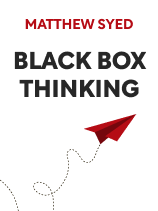

This article is an excerpt from the Shortform book guide to "Black Box Thinking" by Matthew Syed. Shortform has the world's best summaries and analyses of books you should be reading.
Like this article? Sign up for a free trial here .
What is a scapegoat? How does scapegoating at work create a culture of fear?
A scapegoat is someone who throws you under the bus when things go wrong, often making you fear mistakes. According to the book Black Box Thinking, scapegoating at work can be avoided by coming up with proper punishments for making mistakes.
Keep reading to learn why scapegoating at work is instinctive and how scapegoating at work creates a culture of fear.
Mistakes Don’t Have to Be Scary
On the social level, mistakes damage your reputation. Since you’re working in a culture of expertise, any error you commit calls your competency into question. Make too large of a mistake, and you may lose all credibility overnight.
(Shortform note: Individuals at Tribal Leadership’s Stage 3 culture also exhibit a particular relationship style that precludes collaborating to learn from failure. Dave Logan explains that they tend to view colleagues as less competent than them, and they are more interested in controlling the flow of information through one-on-one relationships. Because knowledge is power in a competitive environment, this helps them maintain their image and keep others from knowing too much about them. Unfortunately, this reputation management can come at the expense of the patient.)
Syed explains how these cultures believe that to reduce mistakes, you need to be tough on the person who committed them. In other words, proper punishment should enhance performance. But in reality, unjust punishment causes a number of other problems, from scapegoating at work to forming cover-ups.
We Instinctively Scapegoat
When something goes wrong, we instinctively begin scapegoating at work. We find someone to throw under the bus—usually someone close to the failure—without properly examining the situation.
The problem is always more complicated than it seems. But scapegoating at work oversimplifies the story and exacerbates future problems by creating a climate of fear. In organizations, nobody wants to be scapegoating at work—they could lose their reputation and their livelihood. So mistakes go unreported, unexamined, and unlearned from.
For example, the No Child Left Behind Act, an American educational policy signed into law by President George W. Bush in 2002, failed to achieve its goals on multiple counts. Casual observers might scapegoat Bush, saying that his policy forced teachers to teach to the test and crushed student creativity.
But the situation was more complicated: Policymakers tried to satisfy multiple parties—from civil rights groups to businesses to educators—and aimed to make American schools competitive in a globalizing world. But funding goals weren’t met; many states and districts ignored or partially implemented the policies; and legislative updates floundered in Congress. Knowing all this, it’s difficult to point to a single reason the act failed.
| Cancel Culture Is Mass-Scale Scapegoating Cancel culture is the recent internet phenomenon wherein individuals deemed problematic by public opinion are “canceled,” or boycotted and removed from their online platforms. While some see this as a positive force for removing genuinely harmful individuals from power, others call it censorship. In light of Syed’s description of a scapegoat, we can see that cancel culture can function as large-scale scapegoating: We throw someone under the bus without examining the full complexity of the situation. Further, well-targeted cancellations may remove genuinely harmful individuals from power, like former producer Harvey Weinstein, but they don’t address the systemic problem. Creating effective discourse is one key step toward systemic reform, and the “Rule Omega” can help prevent scapegoating in discourse: In short, any perspective contains some signal (meaningful information) and some noise (meaningless information). When you’re listening to another person speak, withhold judgment when you disagree with them and aim to find the signal—whichever point feels meaningful to you. By finding that common ground, you can empathize with one another and engage in constructive discourse, even if you mostly disagree. |

———End of Preview———
Like what you just read? Read the rest of the world's best book summary and analysis of Matthew Syed's "Black Box Thinking" at Shortform .
Here's what you'll find in our full Black Box Thinking summary :
- How an organization’s culture and systems either promote or prevent learning
- The steps for learning from failure in our complex world
- How to shift mindsets around failure to promote a learning-oriented institution






